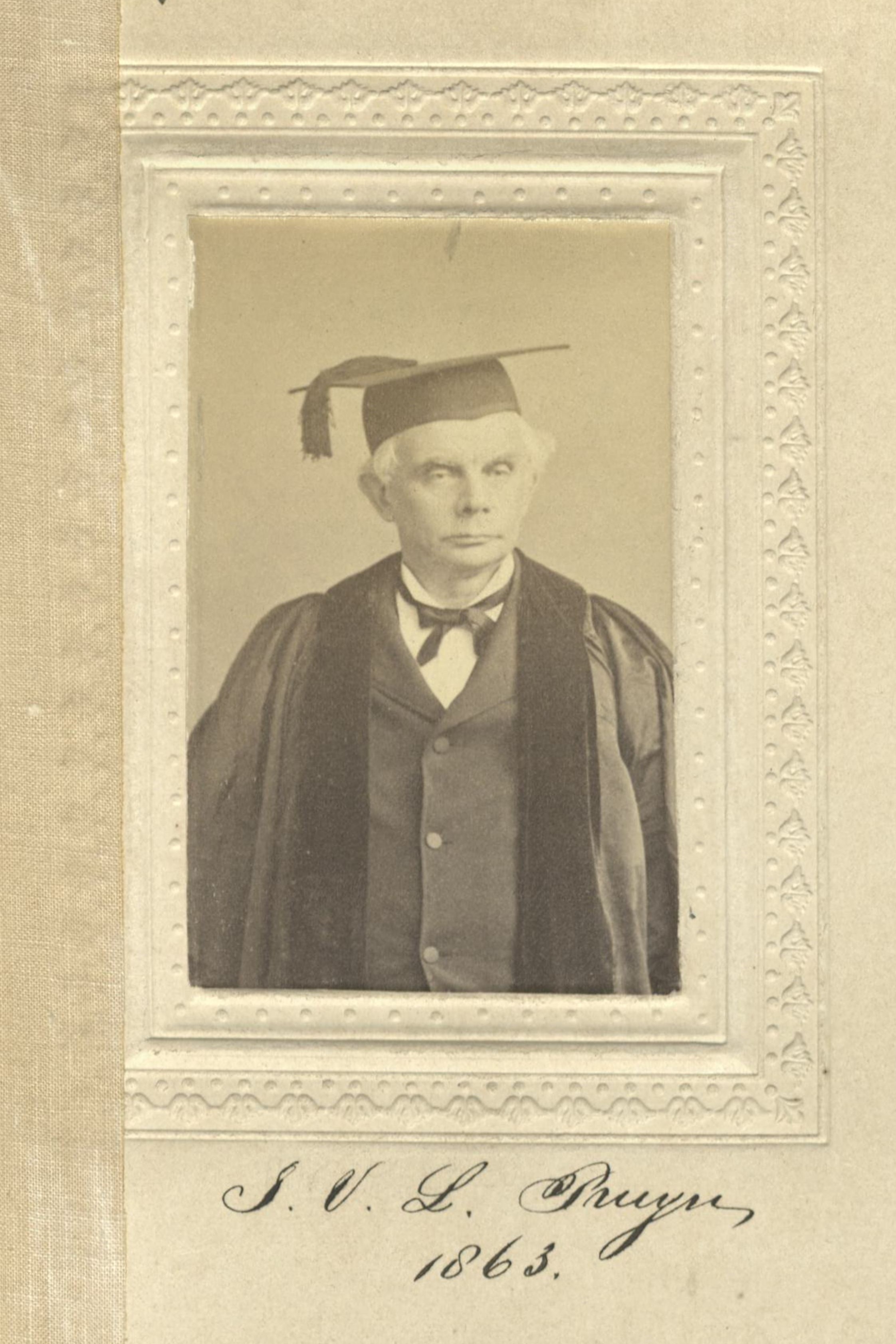Member Directory,
1847 - 1922
Gulian C. Verplanck
Lawyer/Public Official/Author
Centurion, 1847–1870
New York (Manhattan), New York
New York (Manhattan), New York
Age sixty
Fishkill, New York

Archivist’s Notes
President of the Century Association, 1857–1864. Grandfather of William E. Verplanck; grandfather-in-law of Samuel W. Johnson.
Available Digital Resources
Proceedings of the Century Association in Honor of the Memory of Gulian C. Verplanck, April 9, 1870
After his death, a series of memorial addresses delivered at the clubhouse by Henry W. Bellows, Charles P. Daly, Henry C. Dorr, John H. Gourlie, and Francis Vinton was published as Proceedings of the Century Association in Honor of the Memory of Gulian C. Verplanck, April 9, 1870.
Century Memorials
And another there is—or was—if distinction of past or present may be made, where genius and fame are imperishable, as are those of Gulian C. Verplanck—sprung from a hardy and pure native stock, strongly framed and largely endowed in mind by nature, strenuous in labor, enriched with cultivation, ripened by manifold experience, he greatly closed in serene decline a life of wide and useful activity. Many of the highest hours of his mature day were given for our delight and improvement. Is it too fanciful to believe that his influence will still linger to mould the character of the Century—winning us to honor the liberal pursuits he loved—to imitate the impartial judgements of men and their deeds he formed, to aspire towards those lofty ideals of perfection in self and well doing for others to which his spirit was true. So may we justify the pride that regards him as our representative man—the exemplar of our highest possibilities, as he was once our crown and honor.
Augustus R. Macdonough
Annual Meeting Minutes, 14 January 1871
Gulian Crommelin Verplanck had received his degree of Bachelor of Arts at Columbia College, August 5, 1801, when he lacked one day of being fifteen years of age—still a record for Columbia. As a congressman he battled successfully for a copyright law which (says Centurion Allan Nevins) “authors, artists, and booksellers hailed as a great step forward.” He was now seventy-one years old and the active head of the overworked Emigration Commission of New York State with headquarters in Castle Garden.
He had been an editorial associate of William Cullen Bryant, and wrote voluminously on subjects not always closely related, such as the evidences of revealed religion and the doctrine of contracts. Washington Irving’s talents won his praise, but Irving’s “coarse caricature” of the founders of New Amsterdam made Verplanck’s Dutch blood boil.
Verplanck had the pleasure of seeing Thomas Jefferson “in an old two-story house” in Cedar Street “unbending himself in the society of the learned and polite . . . and there was Talleyrand, whom I used to meet at the homes of General Hamilton and Noah Webster.”
In a recent letter written for the Club archives, Centurion Adolph W. Callisen wrote of Verplanck: “I have often seen him in my younger days. Close shaven, [short,] rather stout and dressed in black broadcloth with his neck-cloth wound several times around his collar and tied in a large bow (same as grandfather). Very courtly, refined, and man of the world. A profound jurist, an accomplished scholar . . . a friend of Clay and Calhoun. When the Century moved to East Fifteenth Street, in 1857, he was president, “an office which he filled for seven years. “He had met and knew everybody worth knowing on both sides of the Atlantic and continually entertained a crowd of distinguished strangers.”
Verplanck was succeeded as president of the Century, early in 1864, by George Bancroft, conspicuous for his devotion to the Union cause.
Thomas Hicks’s portrait of Verplanck hangs on the west wall of the Club’s dining-room, and there is a crayon portrait of him in the billiard room by Paul Duggan.
Literature Committee
“Incorporators of the Century, 1857” (1936 pamphlet)
Related Members
Member Directory Home-
 Charles E. AndersonStockbrokerCenturion, 1851–Unknown
Charles E. AndersonStockbrokerCenturion, 1851–Unknown -
 Henry James AndersonProfessor of Mathematics and AstronomyCenturion, 1850–1850s
Henry James AndersonProfessor of Mathematics and AstronomyCenturion, 1850–1850s -
 Henry CoppéeAssistant Professor, West Point, N.Y.Centurion, 1852–1854
Henry CoppéeAssistant Professor, West Point, N.Y.Centurion, 1852–1854 -
 John E. DevelinLawyerCenturion, 1859–1860s
John E. DevelinLawyerCenturion, 1859–1860s -
 John MacMullenEducator/Founder, Boys’ SchoolCenturion, 1856–1896
John MacMullenEducator/Founder, Boys’ SchoolCenturion, 1856–1896 -
 Henry NicollLawyerCenturion, 1850–1850s
Henry NicollLawyerCenturion, 1850–1850s -
 John V. L. PruynLawyer/Educator/PoliticianCenturion, 1863–1877
John V. L. PruynLawyer/Educator/PoliticianCenturion, 1863–1877


